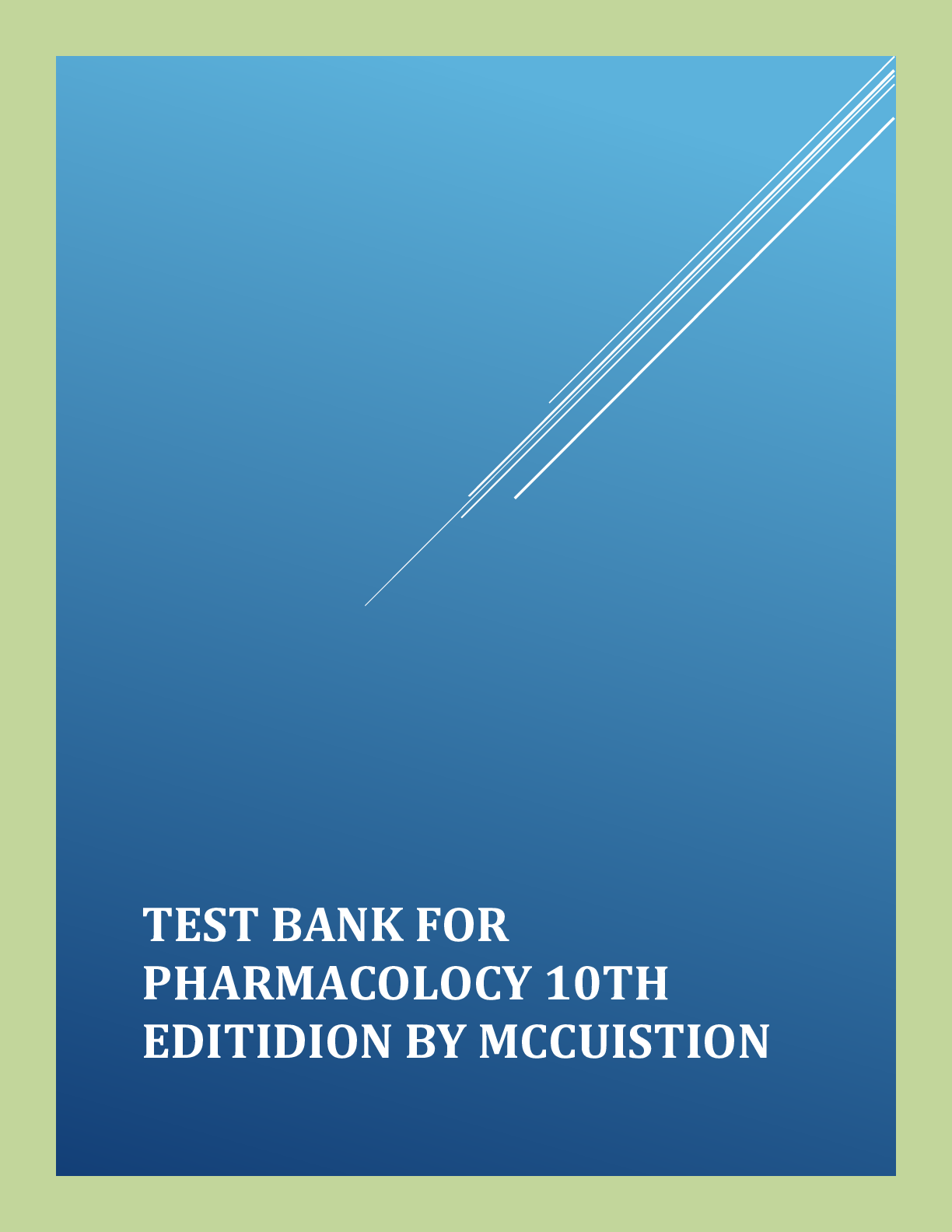NURSING. > EXAM > Test Bank Pharmacology A Patient-Centered Nursing Process Approach, 11th Edition by Linda E. McCuis (All)
Test Bank Pharmacology A Patient-Centered Nursing Process Approach, 11th Edition by Linda E. McCuistion Chapter 1-58 (101% Correct)
Document Content and Description Below
Chapter 01: The Nursing Process and Patient-Centered Care McCuistion: Pharmacology: A Patient-Centered Nursing Process Approach, 11th Edition MULTIPLE CHOICE 1. All of the following would be... considered subjective data, EXCEPT: a. Patient-reported health history b. Patient-reported signs and symptoms of their illness c. Financial barriers reported by the patient’s caregiver d. Vital signs obtained from the medical record ANS: D Subjective data is based on what patients or family members communicate to the nurse. Patient- reported health history, signs and symptoms, and caregiver reported financial barriers would be considered subjective data. Vital signs obtained from the medical record would be considered objective data. DIF: Cognitive Level: Understanding (Comprehension) TOP: Nursing Process: Planning MSC: NCLEX: Management of Client Care 2. The nurse is using data collected to define a set of interventions to achieve the most desirable outcomes. Which of the following steps is the nurse applying? a. Recognizing cues (assessment) b. Analyze cues & prioritize hypothesis (analysis) c. Generate solutions (planning) d. Take action (nursing interventions) ANS: C When generating solutions (planning), the nurse identifies expected outcomes and uses the patient’s problem(s) to define a set of interventions to achieve the most desirable outcomes. Recognizing cues (assessment) involves the gathering of cues (information) from the patient about their health and lifestyle practices, which are important facts that aid the nurse in making clinical care decisions. Prioritizing hypothesis is used to organize and rank the patient problem(s) identified. Finally, taking action involves implementation of nursing interventions to accomplish the expected outcomes. DIF: Cognitive Level: Understanding (Comprehension) TOP: Nursing Process: Nursing Intervention MSC: NCLEX: Management of Client Care 3. A 5-year-old child with type 1 diabetes mellitus has had repeated hospitalizations for episodes of hyperglycemia. The parents tell the nurse that they can’t keep track of everything that has to be done to care for their child. The nurse reviews medications, diet, and symptom management with the parents and draws up a daily checklist for the family to use. These activities are completed in which step of the nursing process? a. Recognizing cues (assessment) b. Analyze cues & prioritize hypothesis (analysis) c. Generate solutions (planning) d. Take action (nursing interventions) ANS: D Taking action through nursing interventions is where the nurse provides patient health teaching, drug administration, patient care, and other interventions necessary to assist the patient in accomplishing expected outcomes. DIF: Cognitive Level: Understanding (Comprehension) TOP: Nursing Process: Nursing Intervention MSC: NCLEX: Management of Client Care 4. The nurse is preparing to administer a medication and reviews the patient’s chart for drug allergies, serum creatinine, and blood urea nitrogen (BUN) levels. The nurse’s actions are reflective of which of the following? a. Recognizing cues (assessment) b. Analyze cues & prioritize hypothesis (analysis) c. Take action (nursing interventions) d. Generate solutions (planning) ANS: A Recognizing cues (assessment) involves gathering subjective and objective information about the patient and the medication. Laboratory values from the patient’s chart would be considered collection of objective data. DIF: Cognitive Level: Understanding (Comprehension) TOP: Nursing Process: Assessment MSC: NCLEX: Management of Client Care 5. Which of the following would be correctly categorized as objective data? a. A list of herbal supplements regularly used provided by the patient. b. Lab values associated with the drugs the patient is taking. c. The ages and relationship of all household members to the patient. d. Usual dietary patterns and food intake. ANS: B Objective data are measured and detected by another person and would include lab values. The other examples are subjective data. DIF: Cognitive Level: Understanding (Comprehension) TOP: Nursing Process: Assessment MSC: NCLEX: Management of Client Care [Show More]
Last updated: 2 years ago
Preview 1 out of 347 pages

Buy this document to get the full access instantly
Instant Download Access after purchase
Buy NowInstant download
We Accept:

Reviews( 0 )
$9.00
Can't find what you want? Try our AI powered Search
Document information
Connected school, study & course
About the document
Uploaded On
Jun 21, 2023
Number of pages
347
Written in
Additional information
This document has been written for:
Uploaded
Jun 21, 2023
Downloads
0
Views
80

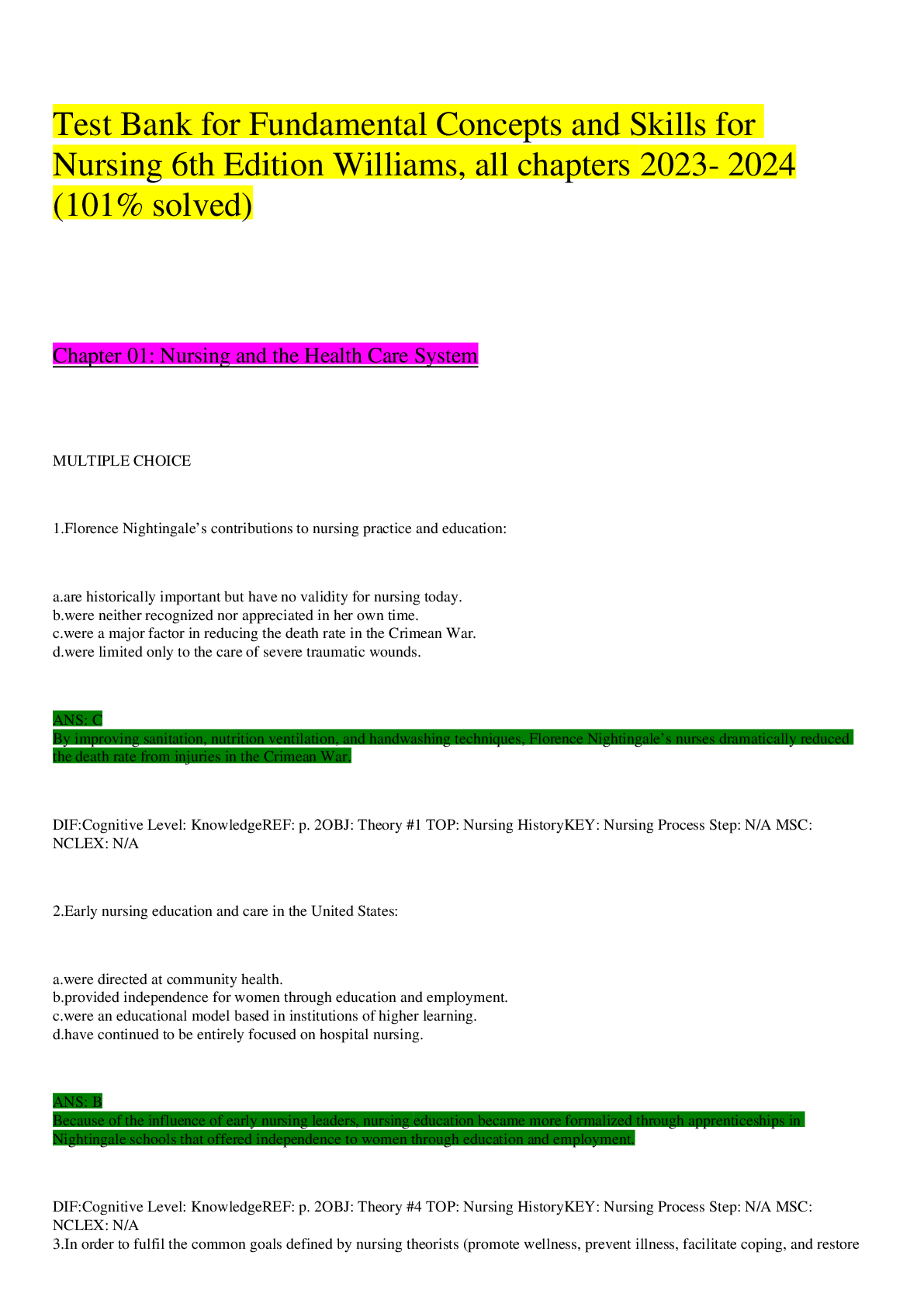

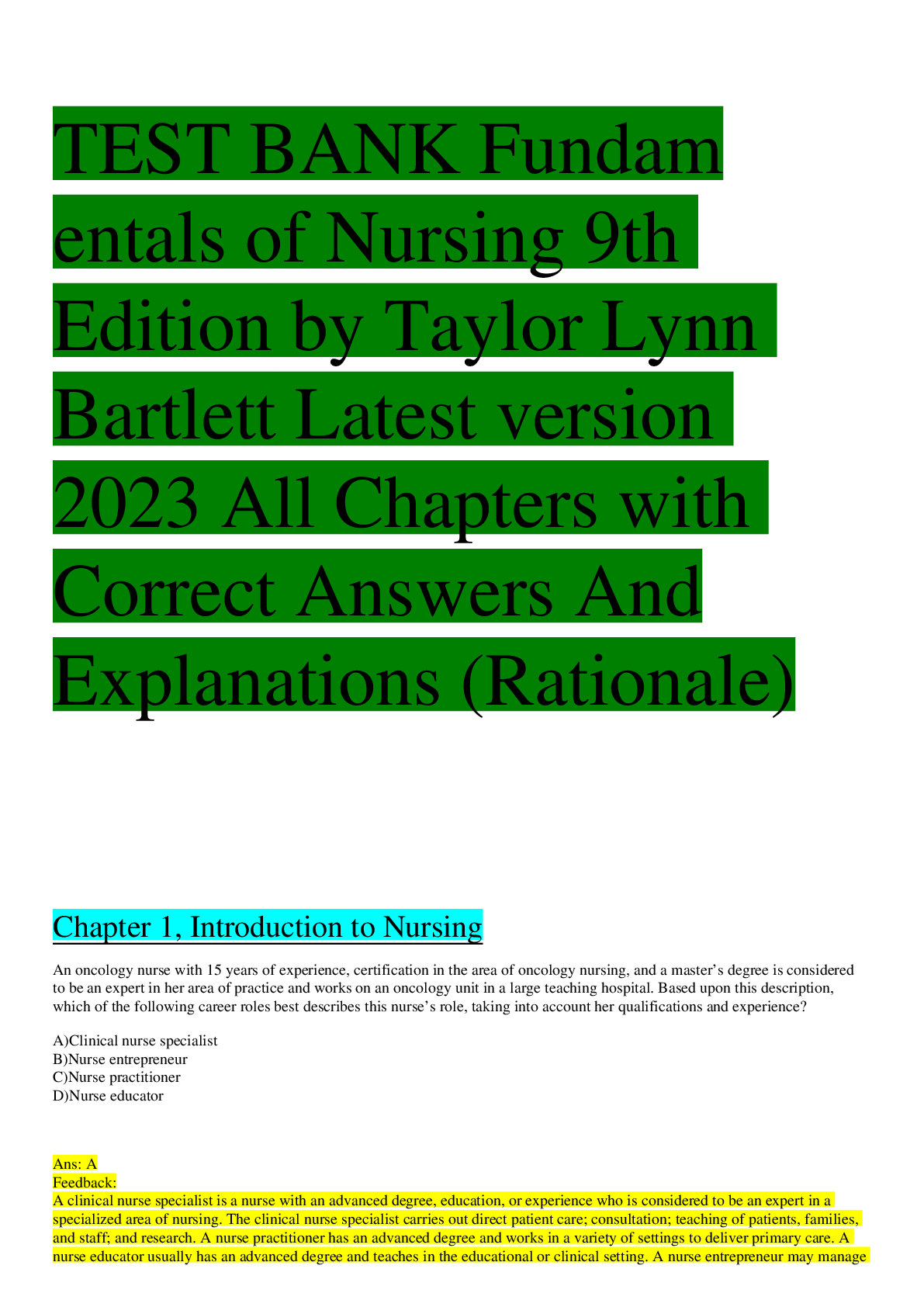
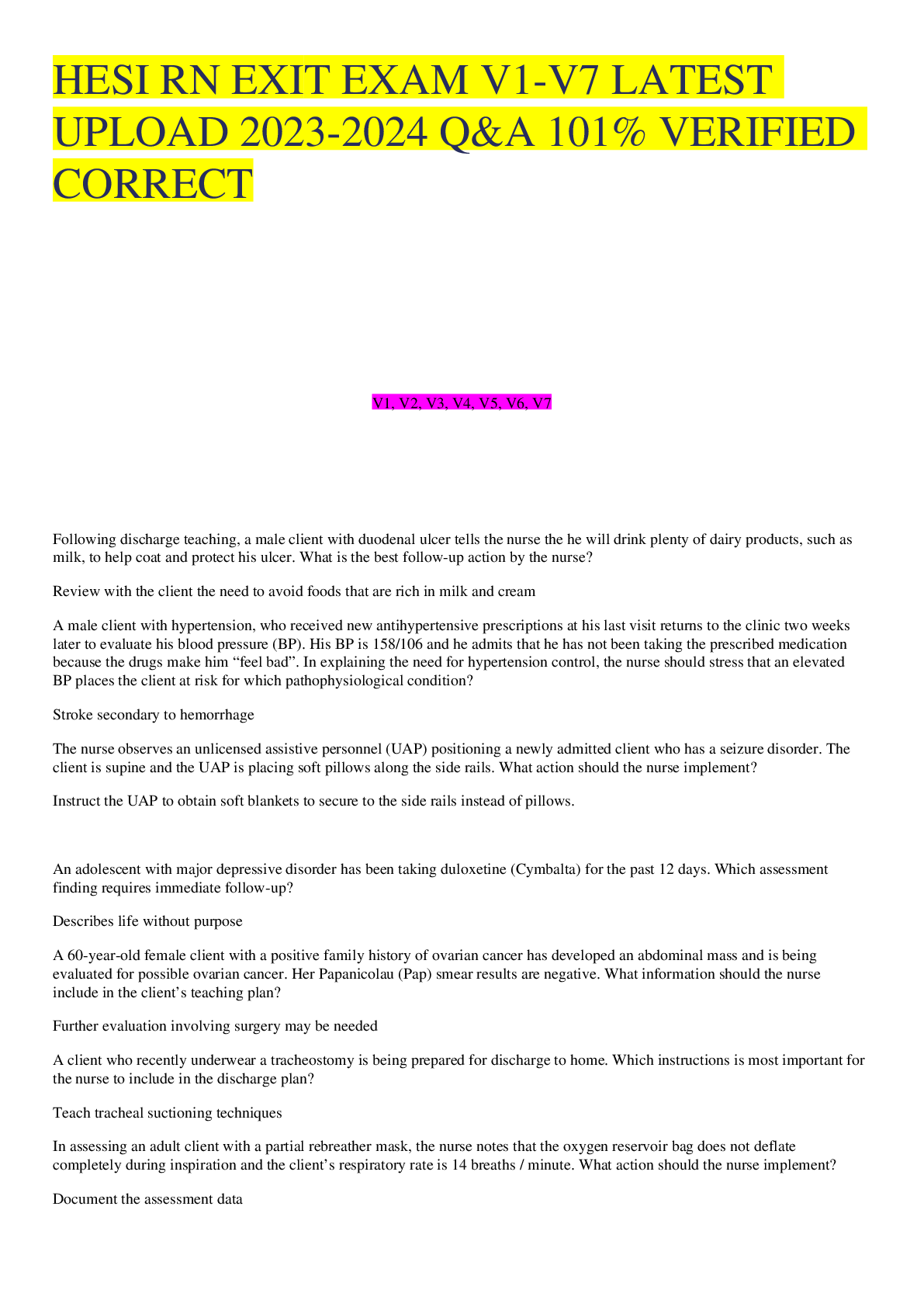

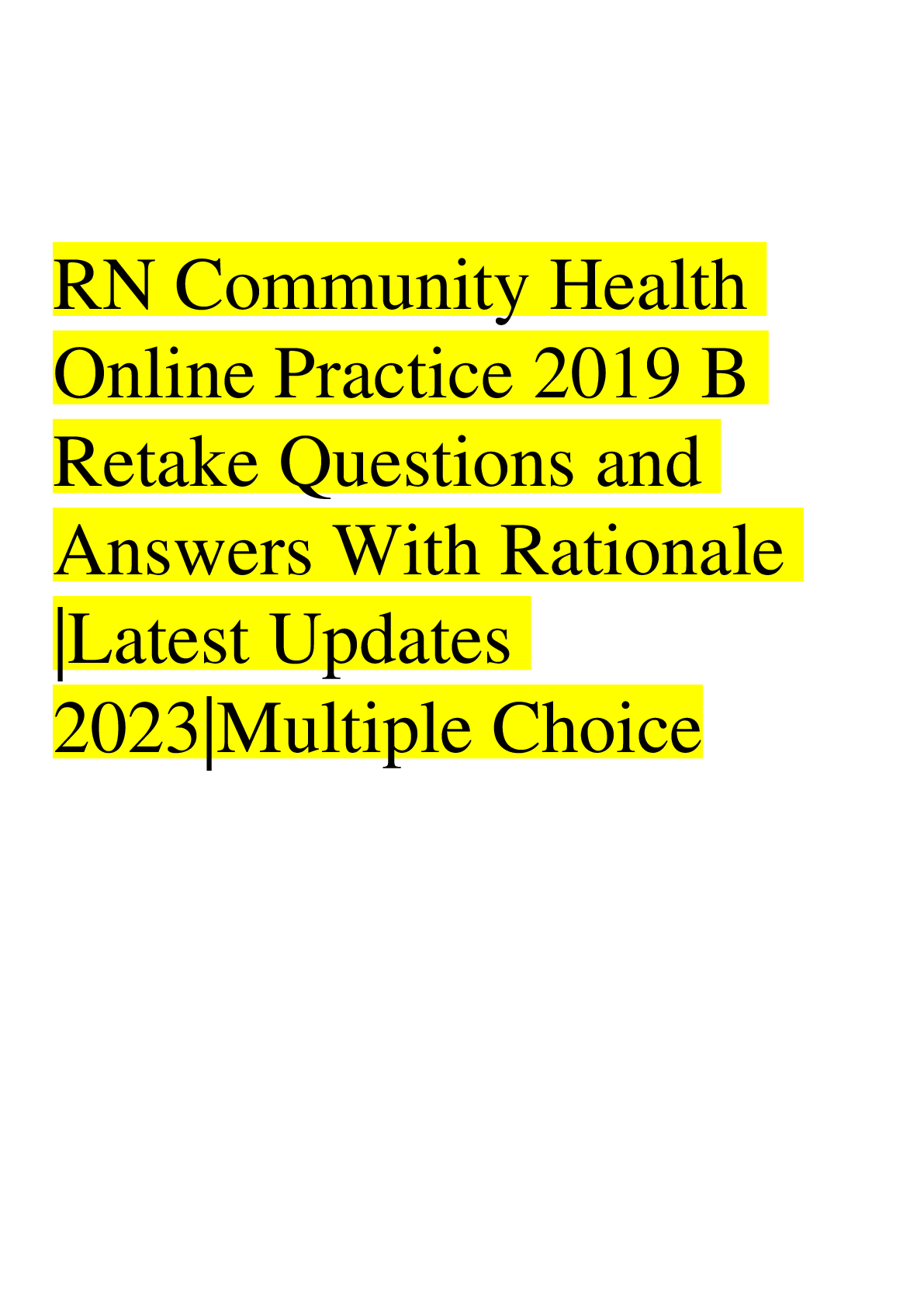





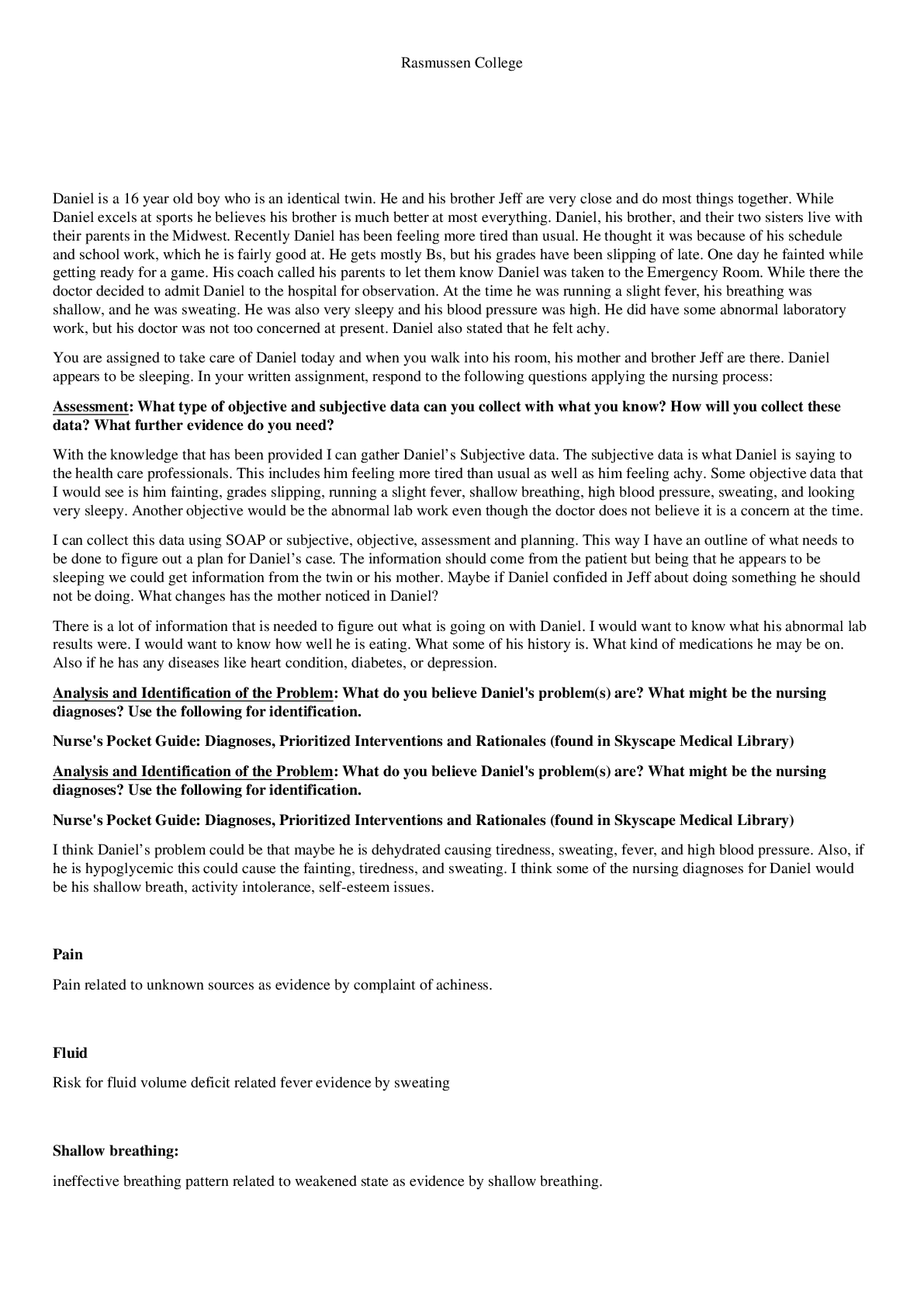




.png)


